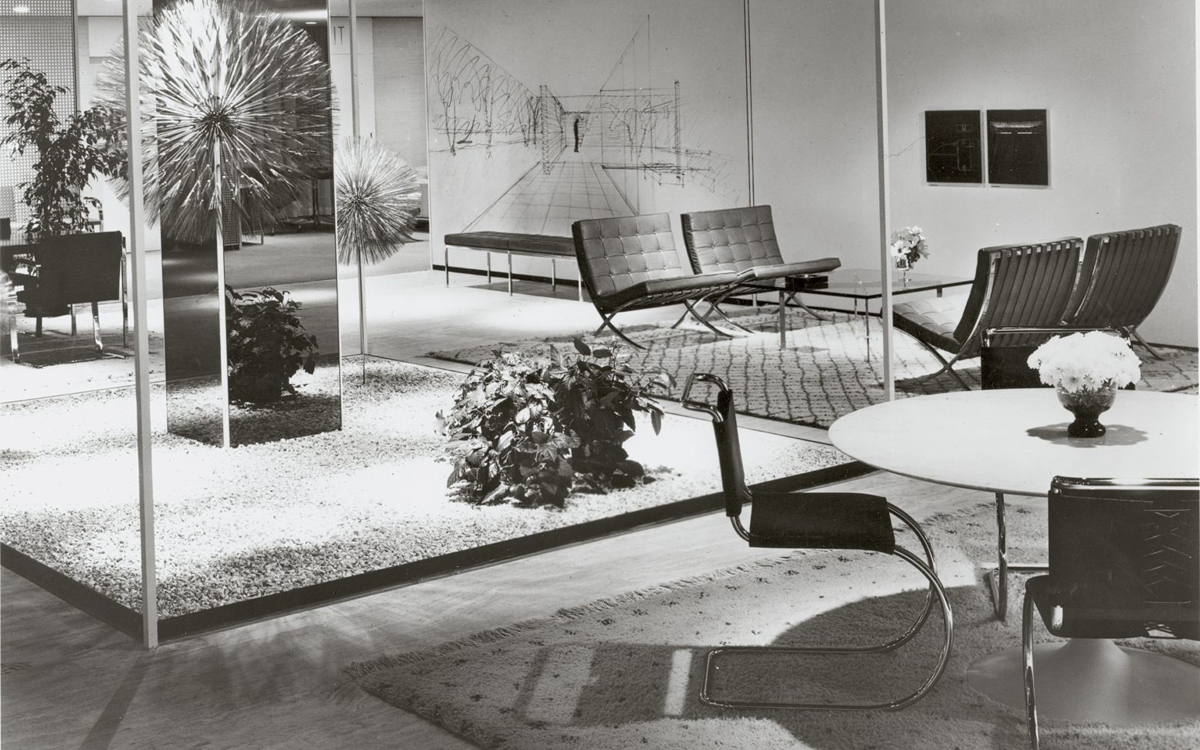Florence Knoll’s 100th Birthday
Celebrating the American icon and her designs


Today marks Michigan-born design and furniture icon Florence Knoll‘s 100th birthday. While no longer designing, she carries an incredibly important place in American design history—thanks to her thoughtful creations that were functional but sleek and stylish. Her many designs—from tables and desks to chairs, sofas, benches and stools—are timeless; reflecting her architectural training and overall sense of style.
We had a quick chat with Knoll‘s Executive Vice President of Design, Benjamin A. Pardo about Knoll’s pragmatic approach to design, her forward-thinking ethos and its significance to Knoll and the industry as a whole.

A 100th birthday is a major milestone. In Florence Knoll Bassett’s case it’s also a chance to reflect on her contributions to architecture and interior design. What are some of her achievements we should be celebrating today?
First and foremost, Florence Knoll proved that “good design is good business”—on several different levels. For her clients, she demonstrated that thoughtful spatial planning and high-quality furniture could improve the experiences of their people, thereby improving their businesses. For Knoll, she demonstrated that a consistently high standard of design was enough to propel the brand and image of a company, cementing it as a leader in furniture and workplace design.
She ardently maintained that she did not merely decorate space. She created it.
She also made a strong statement in 1964 when she said, “I am not a decorator,” and referred to herself as an interior designer. That was a relatively new term then, an evolution and elevation of the role. Is it fair to say that she helped pioneer that transition?
In creating the revolutionary Knoll Planning Unit, Florence Knoll defined the standard for the modern corporate interiors of post-war America. In the process, she also created the job description for the “interior designer” as we know it today. Drawing on her background in architecture, she introduced modern notions of efficiency, space planning, and comprehensive design to office planning. She ardently maintained that she did not merely decorate space. She created it. The Planning Unit (and its interior designers) rigorously researched and surveyed each client—assessing their needs, defining patterns of use and understanding company hierarchies—before presenting a comprehensive design, informed by the principles of modernism and beautifully executed in signature Knoll style.

Though she’s no longer working, how are her accomplishments, philosophy and style still informing the company today?
Florence Knoll was mentored by Mies van der Rohe, who brought from the Bauhaus to the Illinois Institute of Technology the concept of the gesamtkunstwerk—the total work of art. She brought this idea to Knoll through the Planning Unit, in effect placing Knoll furniture in architectural spaces to achieve the goal of creating inspiring work environments for clients and their people. In this sense, we still live by the credo that furniture design is only valuable insofar as it contributes to and speaks to the overall design of a space.

Even the furniture she designed herself was envisioned as parts of a larger spatial whole—she referred to them as the “meat and potatoes” that had to be designed as solutions to larger problems of spatial planning. In keeping with this idea, she also founded KnollTextiles in 1947 in order meet the material needs of Knoll’s furniture and office designs.
We know it’s unfair to ask you to play favorites, but do any of Florence Knoll designs mean a little bit extra to you?
I am partial to Florence Knoll’s table desk series; the Knoll table desk became the industry standard, and she invented it.
Images courtesy of Knoll












